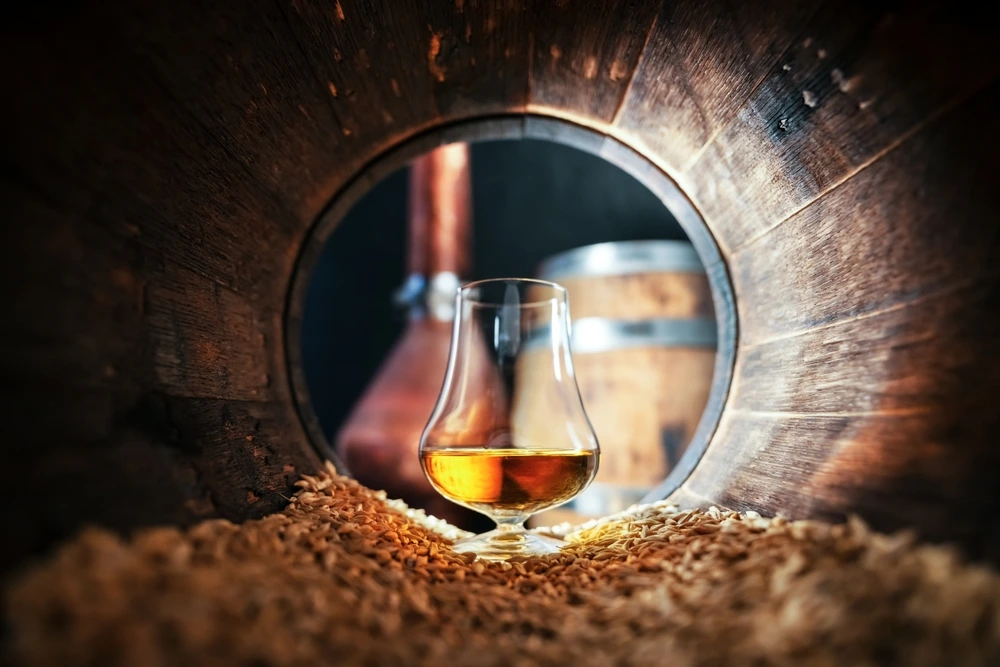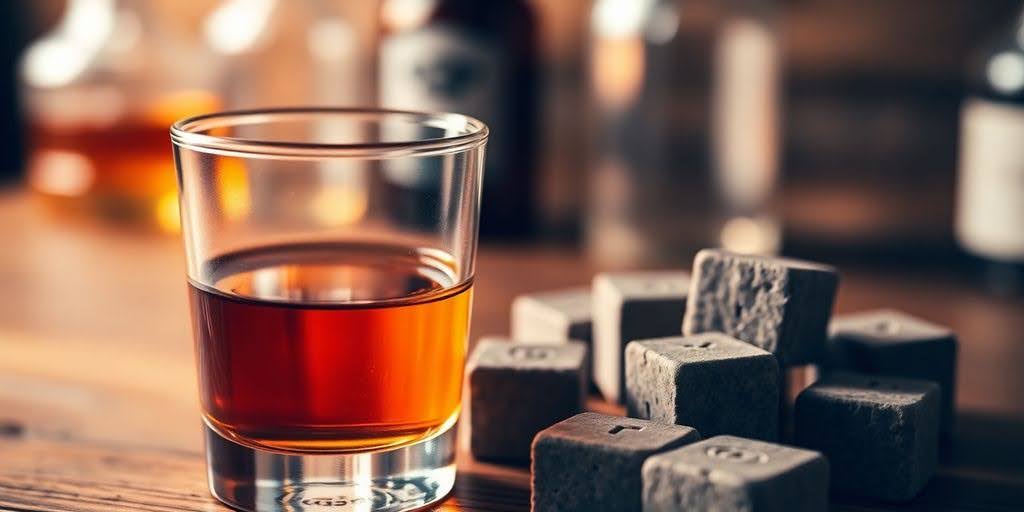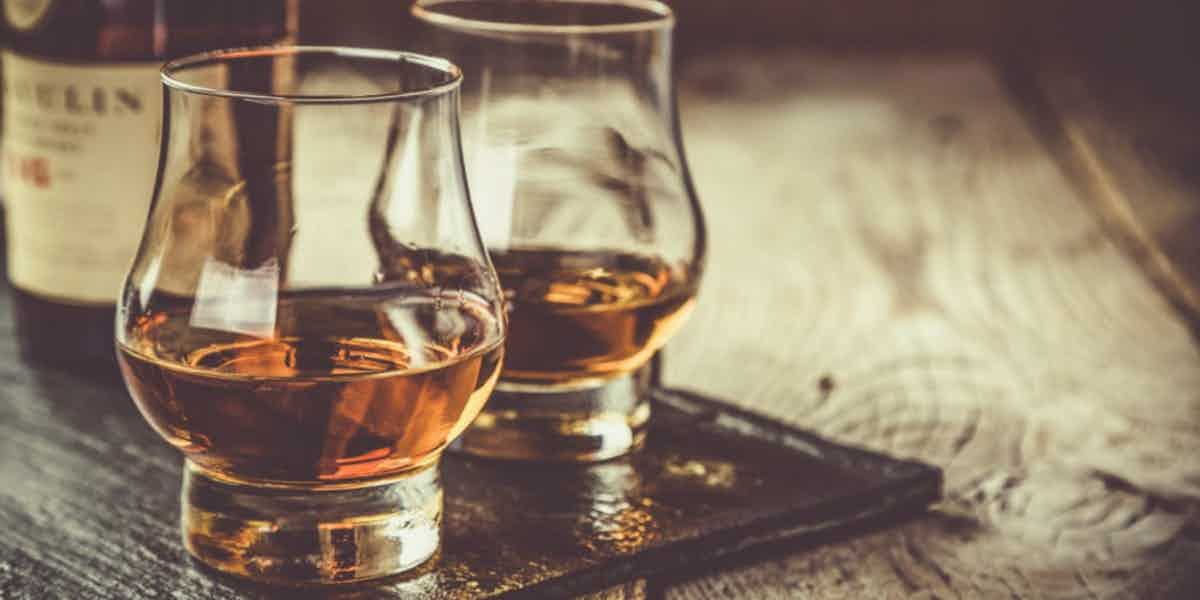
What is the Difference Between Rye and Bourbon? A Comprehensive Guide
You’re not alone if you’ve ever pondered the difference between rye and bourbon. These two types of whiskey are often confused, but they have unique characteristics that set them apart. This guide will break down their histories, ingredients, production methods, and flavor profiles to help you appreciate each spirit’s distinct qualities. We’ll also point you toward where you can enjoy both at the 1923 Prohibition Bar in Las Vegas.
Historical Background
The Birth of Bourbon
Bourbon’s story is deeply intertwined with the early days of American settlement. It’s generally accepted that bourbon production began in Kentucky, though the exact origins are debated. Early settlers, many of whom were Scots-Irish immigrants, brought their distilling skills to the New World. They found that corn grew exceptionally well in the Kentucky climate, leading them to use it as the primary grain in their whiskey. Over time, this corn-based whiskey evolved into what we now know as bourbon. The name “bourbon” is believed to be derived from Bourbon County, Kentucky, though this too is subject to some debate. It’s a spirit born from necessity and ingenuity, a true American original.
Rye Whiskey’s Northeastern Roots
Rye whiskey has a history that runs parallel to bourbon but has its own distinct path. While bourbon took root in the South, rye whiskey flourished in the Northeastern states, particularly Pennsylvania and Maryland. Rye grain thrived in the cooler climates and poorer soils of the Northeast, making it a natural choice for early distillers. Rye whiskey was a popular drink in early America, even predating bourbon in widespread production. The Whiskey Rebellion of the 1790s, sparked by a federal tax on distilled spirits, was primarily fueled by rye whiskey producers in Pennsylvania who felt unfairly targeted. This event highlights rye whiskey’s significant role in the early American economy and culture.
The Evolution of American Whiskey
The story of American whiskey is one of constant change and adaptation. Both bourbon and rye have undergone significant transformations since their early days. Factors like technological advancements in distilling, changes in consumer preferences, and shifts in legal regulations have all shaped the spirits we enjoy today. For example, the Bottled-in-Bond Act of 1897 helped to establish standards of quality and authenticity for American whiskey. The rise and fall of different whiskey styles, like the decline of rye during the mid-20th century and its subsequent resurgence, reflect the ever-evolving tastes of the drinking public. Today, both bourbon and rye are experiencing a renaissance, with distillers pushing the boundaries of flavor and innovation while still honoring traditions. The history of bourbon is rich and complex.
Bourbon and Rye Ingredient Differences
Bourbon’s Corn-Based Mash
Bourbon must be made with a mash bill of at least 51% corn. This high corn content is what gives bourbon its sweetness and smooth feel. It’s pretty simple: more corn equals a sweeter whiskey. Think of it like making cornbread – the more cornmeal you use, the sweeter it tastes. Bourbon distillers have leaned into this, creating some seriously sweet and easy-drinking bourbons.
Rye Whiskey’s Rye-Based Mash
On the other hand, Rye whiskey needs to be made with a mash bill that’s at least 51% rye. This is where you get that spicy, bold flavor that rye is known for. It’s a big difference from bourbon. Rye gives the whiskey a peppery kick, making it a favorite for those who like a bit more edge in their drinks. The rye whiskey stands out in a cocktail.
The Role of Other Grains
Both bourbon and rye often include other grains in their mash bills, like malted barley and wheat. These grains add complexity and depth to the final product.
- Malted barley is often used to help with the fermentation process.
- Wheat can soften the flavor, making the whiskey a bit smoother.
- The specific combination of grains is a closely guarded secret among distillers.
Each distillery’s exact recipe, or mash bill, sets it apart. It’s a delicate balance of tradition and experimentation, with each distiller trying to create a unique flavor profile that will appeal to whiskey lovers.
Here’s a simple table showing the basic grain requirements:
Whiskey Type Minimum % of Primary Grain Other Common Grains
Bourbon 51% Corn Rye, Malted Barley, Wheat
Rye 51% Rye Corn, Malted Barley
Production Process Variations
Bourbon’s Distillation Techniques
Bourbon production relies on specific distillation methods to achieve its characteristic flavor. Column stills are often used for the initial distillation to increase the alcohol content efficiently. Then, the spirit usually goes through a second distillation in a copper pot still. This helps to refine the flavor and remove unwanted compounds. The use of copper is essential because it helps remove sulfur compounds, which can give the whiskey an unpleasant taste. It’s an involved process, but it gives bourbon its distinct profile.
Rye Whiskey’s Distillation and Aging
Rye whiskey production shares some similarities with bourbon but has key differences. The distillation process often involves column stills, but some distilleries opt for pot stills to enhance the whiskey’s complexity. The higher rye content in the mash bill can create challenges during fermentation and distillation, requiring careful monitoring and adjustments. Aging is also crucial; new, charred oak barrels are necessary, just like with bourbon, but the aging time and warehouse location can significantly impact the final flavor.
Legal Requirements for Production
Both bourbon and rye whiskey are subject to strict legal regulations that govern their production. These regulations ensure quality and authenticity. For bourbon, the key requirements include:
- It is being made in the United States.
- It contains at least 51% corn in the mash bill.
- Being aged in new, charred oak barrels.
Rye whiskey also has its own set of rules:
- It must be made in the United States.
- The mash bill must contain at least 51% rye.
- It also needs to be aged in new, charred oak barrels.
These legal frameworks protect consumers and help maintain the integrity and tradition of American whiskeys. It’s all about ensuring you get what you expect when buying a bottle of bourbon or rye.
Geographic Distinctions
Bourbon’s Kentucky Roots
Bourbon is synonymous with Kentucky. While it can be made anywhere in the United States, Kentucky is where it really took off and where most of the good stuff still comes from. The state’s climate and limestone-filtered water are perfect for bourbon production. It’s not just marketing; there’s something about Kentucky that makes for great bourbon. You can find a bourbon guide online if you want to learn more.
Rye Whiskey’s Diverse Production Locations
Rye, on the other hand, isn’t tied to one specific place. While it has historical roots in the Northeast, particularly Pennsylvania and Maryland, you can find good rye being made all over the country, and even in other parts of the world. This broader distribution means there’s a lot more variation in styles and flavors.
Impact of Geography on Flavor
Geography plays a significant role in how both bourbon and rye taste. The local climate, water sources, and even the types of oak used for barrels can all have a noticeable effect. For example:
- Kentucky bourbon often has a richer, sweeter profile due to the local corn and climate.
- Rye from the Northeast might have a bolder, spicier character, reflecting the region’s rye varieties.
- Even the air quality and humidity in the aging warehouses can influence the final product.
Ultimately, the location where whiskey is made is more than just a label; it’s a key ingredient in the final flavor. Different regions bring different characteristics to the spirit, making each bottle unique.
Flavor Profiles
Bourbon’s Sweet and Smooth Character
Bourbon is often described as having a sweet and smooth flavor profile. This is mainly due to the high corn content in its mash bill. You’ll frequently find caramel, vanilla, and oak notes, making it a very approachable whiskey. It’s a popular choice for sipping straight or mixing into cocktails.
Rye Whiskey’s Spicy and Complex Flavors
Rye whiskey, on the other hand, has a bolder, spicier character. Think black pepper, cinnamon, and even a hint of mint. This complexity makes it a favorite for those who want a bit more kick. Rye whiskey typically has a more pronounced flavor, even though both are aged in barrels.
How Ingredients Influence Taste
The difference in flavor between bourbon and rye comes down to the grains used. Bourbon’s high corn content gives it that sweetness, while rye’s dominant rye grain provides the spice. Other grains, like barley, also play a role, but the primary grain shapes the overall taste.
It’s incredible how a simple ingredient change can create different flavor experiences. Bourbon is like a warm hug, while rye is like a lively conversation. Both are great, just different!
Cocktail Applications
Classic Bourbon Cocktails
Bourbon shines in some classic cocktails. Think about the Old Fashioned, for example. It’s simple, but the bourbon’s sweetness and oaky notes come through. Then there’s the Manhattan, where the bourbon plays nicely with sweet vermouth and bitters. And who can forget the Mint Julep? It’s practically synonymous with bourbon, especially around Kentucky Derby time. These drinks are popular because they let the bourbon do its thing.
- Old Fashioned
- Manhattan
- Mint Julep
Popular Rye Whiskey Drinks
Rye whiskey brings a different vibe to the cocktail scene. It’s got that spicy kick that can wake up a drink. The Sazerac is a prime example, with its absinthe rinse and Peychaud’s bitters. A classic Manhattan also works great with rye, giving it a bolder edge. And if you’re feeling adventurous, try a Revolving Door. Rye’s assertive flavor cuts through the other ingredients, making for a complex and interesting drink.
- Sazerac
- Manhattan (Rye version)
- Revolving Door
Mixology Tips for Each Spirit
When you’re mixing with bourbon, think about complementing its sweetness. Ingredients like vanilla, caramel, and fruit syrups work well. Bourbon is also forgiving, so it can be used in a variety of flavors. Rye, on the other hand, needs a bit more consideration. Its spice can clash with overly sweet ingredients, so it’s best to balance it with bitter or herbal notes. Don’t be afraid to experiment, but always taste as you go. The goal is to create a balanced drink through which the whiskey’s character shines.
Using high-quality ingredients makes a big difference. Fresh juices, good bitters, and homemade syrups can elevate your cocktails. Also, don’t underestimate the importance of proper dilution. Shaking or stirring your drink correctly will help to meld the flavors and create the right texture.
Food Pairing Suggestions
Okay, so you’ve got your bourbon or rye. Now what? Let’s talk about food. Matching whiskey with food can change the whole experience. It’s not just about drinking; it’s about creating a flavor adventure.
Ideal Pairings for Bourbon
Bourbon, with its sweeter notes, goes great with richer foods. Think caramel, vanilla, and a touch of oak. Here are some ideas:
- Grilled Salmon: The smokiness of the grill and the richness of the salmon are balanced by bourbon’s sweetness.
- Beef (especially BBQ): Bourbon and BBQ are a classic combo. The sweetness cuts through the smoky, savory flavors.
- Cheese (aged cheddar or gouda): The bourbon’s warmth mellows the sharpness of the cheese. Consider a cheese selection to complement your bourbon.
- Ham: The saltiness of ham greatly contrasts with bourbon’s sweetness.
- Milk Chocolate: The creamy sweetness of milk chocolate perfectly matches bourbon’s caramel notes.
Complementary Foods for Rye Whiskey
Rye, on the other hand, is spicier and more complex. It needs foods that can stand up to its boldness. It’s got that distinct flavor that cuts through some heavier dishes.
- Spicy Foods: Think chilli, spicy tacos, or anything with a kick. Rye’s spice complements the heat.
- Charcuterie: Cured meats, pâtés, and strong cheeses are great with rye. The whiskey’s spice balances the saltiness and richness.
- Smoked Meats: The meat’s smokiness and the rye’s spiciness create a complex and satisfying pairing.
- Dark Chocolate: The bitterness of dark chocolate is an excellent contrast to rye’s spice.
- Roasted Vegetables: Hearty roasted vegetables like Brussels sprouts or root vegetables can withstand rye’s bold flavor.
Creating a Balanced Meal with Whiskey
Pairing whiskey with food isn’t just about individual flavors; it’s about creating a balanced meal. Here’s how to think about it:
- Consider the Intensity: Don’t pair a delicate whiskey with an overpowering dish. Match the intensity of the whiskey with the intensity of the food.
- Look for Contrasts: Sometimes, the best pairings contrast flavors. Sweet and savory, spicy and smooth – these combinations can be exciting.
- Think About Texture: The texture of the food can also affect the pairing. Creamy foods can mellow out a spicy whiskey, while crunchy foods can add a new dimension to a smooth bourbon. Consider whiskey reviews to find the perfect match.
Ultimately, the best way to find your favorite pairings is to experiment. Try different combinations and see what you like. Don’t be afraid to break the rules and discover something new. After all, taste is subjective, and what works for one person might not work for another.
Wrapping It Up: Bourbon vs. Rye
So, there you have it. Bourbon and rye whiskey are both American classics, but they each bring something different to the table. Bourbon is all about that sweet, smooth vibe, thanks to its corn base, while rye packs a punch with its spicy, bold flavors from the rye grain. Whether you’re sipping neat, mixing up cocktails, or just exploring the world of whiskey, knowing these differences can enhance your experience. So next time you’re at the bar or liquor store, you’ll know exactly what to look for. Cheers to discovering your favorite!
Visit the 1923 Prohibition Bar in Las Vegas
Ready to explore bourbon and rye in a real speakeasy setting? Head to 1923 Prohibition Bar inside Mandalay Bay and The Venetian on the Las Vegas Strip. Whether you’re looking for a classic bourbon cocktail, a spicy rye-based drink, or a guided whiskey tasting, 1923 Prohibition Bar offers a one-of-a-kind experience with expertly crafted drinks, vintage ambiance, and knowledgeable bartenders who love to talk whiskey. It’s the perfect place to sip and learn.
Mandalay Bay Address: Mandalay Bay, 3950 Las Vegas Blvd S, Las Vegas, NV 89119
Venetian Address: The Venetian Resort, 3377 Las Vegas Blvd S 2510 M, Las Vegas, NV 89109
Website: https://www.1923lv.com/
Reservations: Recommended for weekend evenings and special events
Frequently Asked Questions
What is bourbon made from?
Bourbon is made from at least 51% corn, which gives it a sweet flavor.
What is rye whiskey made from?
Rye whiskey must contain at least 51% rye, making it spicier and bolder than bourbon.
Where did bourbon originate?
Bourbon originated in Kentucky, where the climate is excellent for growing corn.
Where is rye whiskey commonly produced?
Rye whiskey is made in several places across the U.S., especially in the Northeast.
How do the flavors of bourbon and rye differ?
Bourbon is sweet and smooth, while rye is known for its spicy and complex flavors.
What cocktails can I make with bourbon and rye?
Bourbon is great in drinks like the Old Fashioned, while rye works well in cocktails like the Manhattan.
Where can I try both bourbon and rye in Las Vegas?
Visit the 1923 Prohibition Bar at Mandalay Bay or The Venetian Resort for expertly mixed bourbon and rye whiskey cocktails in an immersive speakeasy setting.
Disclaimer: This article is for informational purposes only. Please enjoy whiskey responsibly and consult a healthcare provider if you have questions about alcohol consumption.



